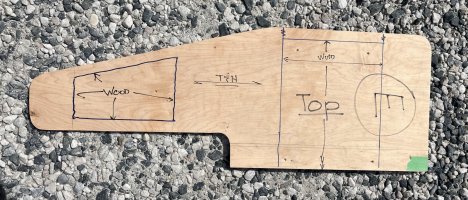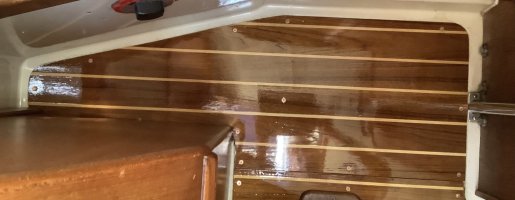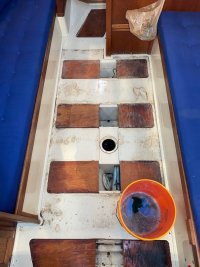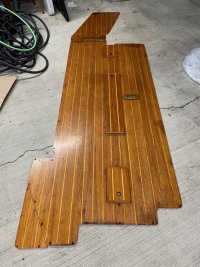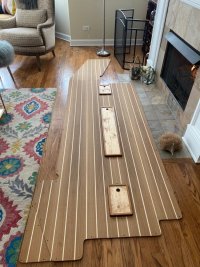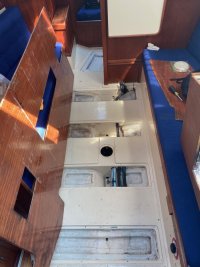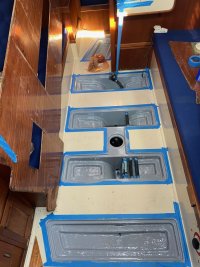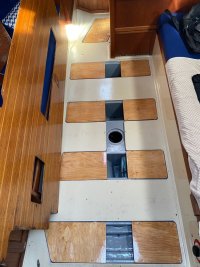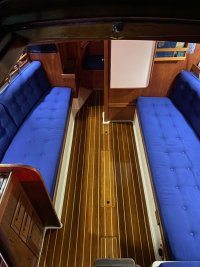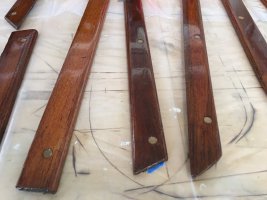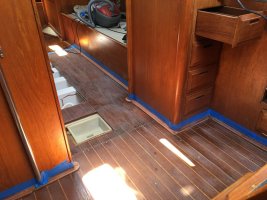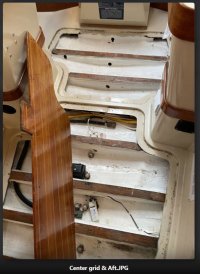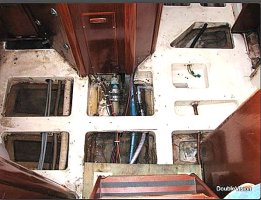I went round and round on this issue, swinging myself like a rat on a string.
I wound up just putting bungs in 50 holes (sole only, not trim) and it wasn't too bad. But now I have to nick them off with a sharp chisel. In the past I have screwed this up by nicking below flush, which means picking out the bung and starting over.
I spent nearly an hour this morning sharpening my chisel, a sure sign of hope reigning over probability.
Almost finished the 381 sole replacement, which has been a bear. Thirty-seven work days so far, two coats of varnish-in-place remain. When it stops raining.


